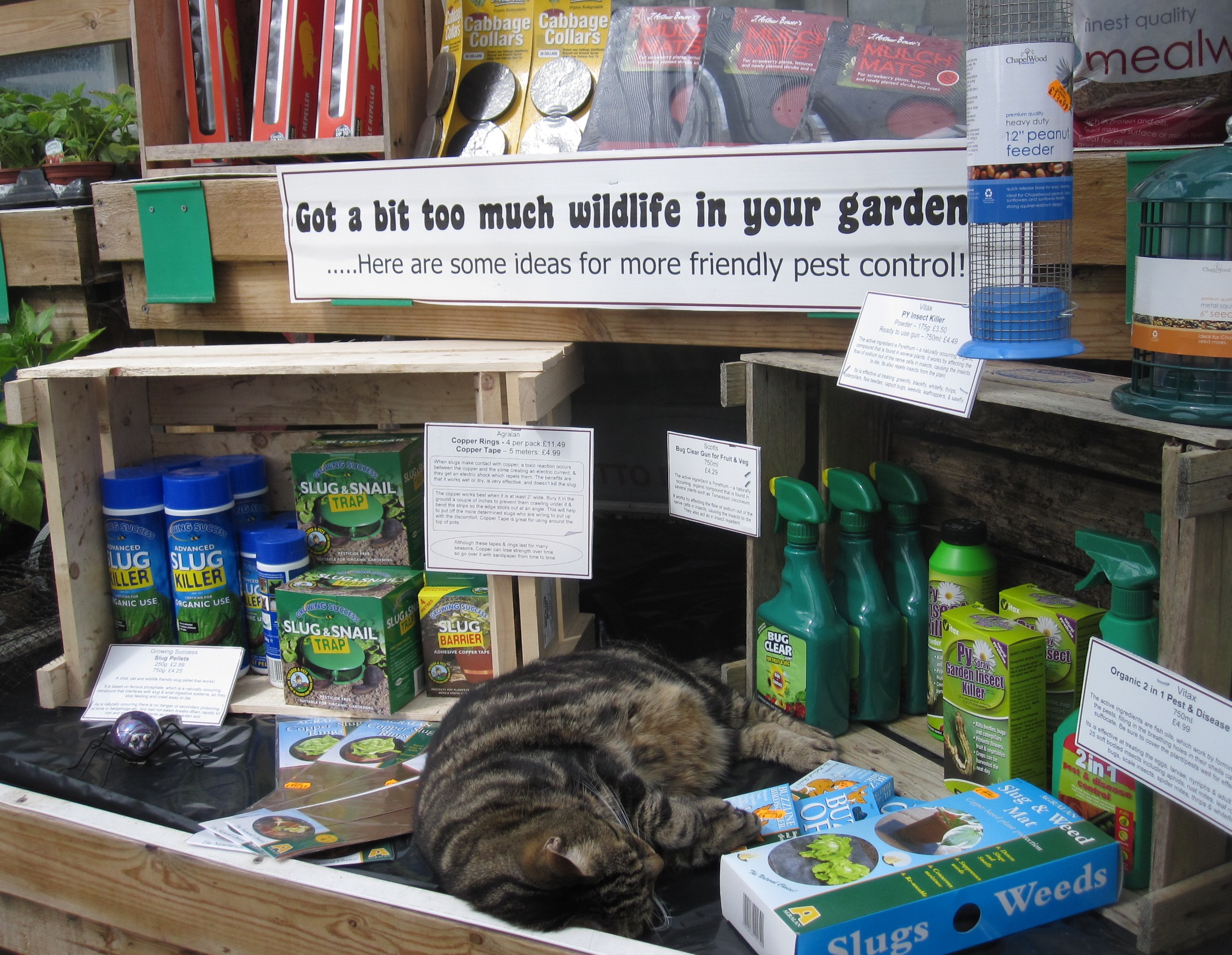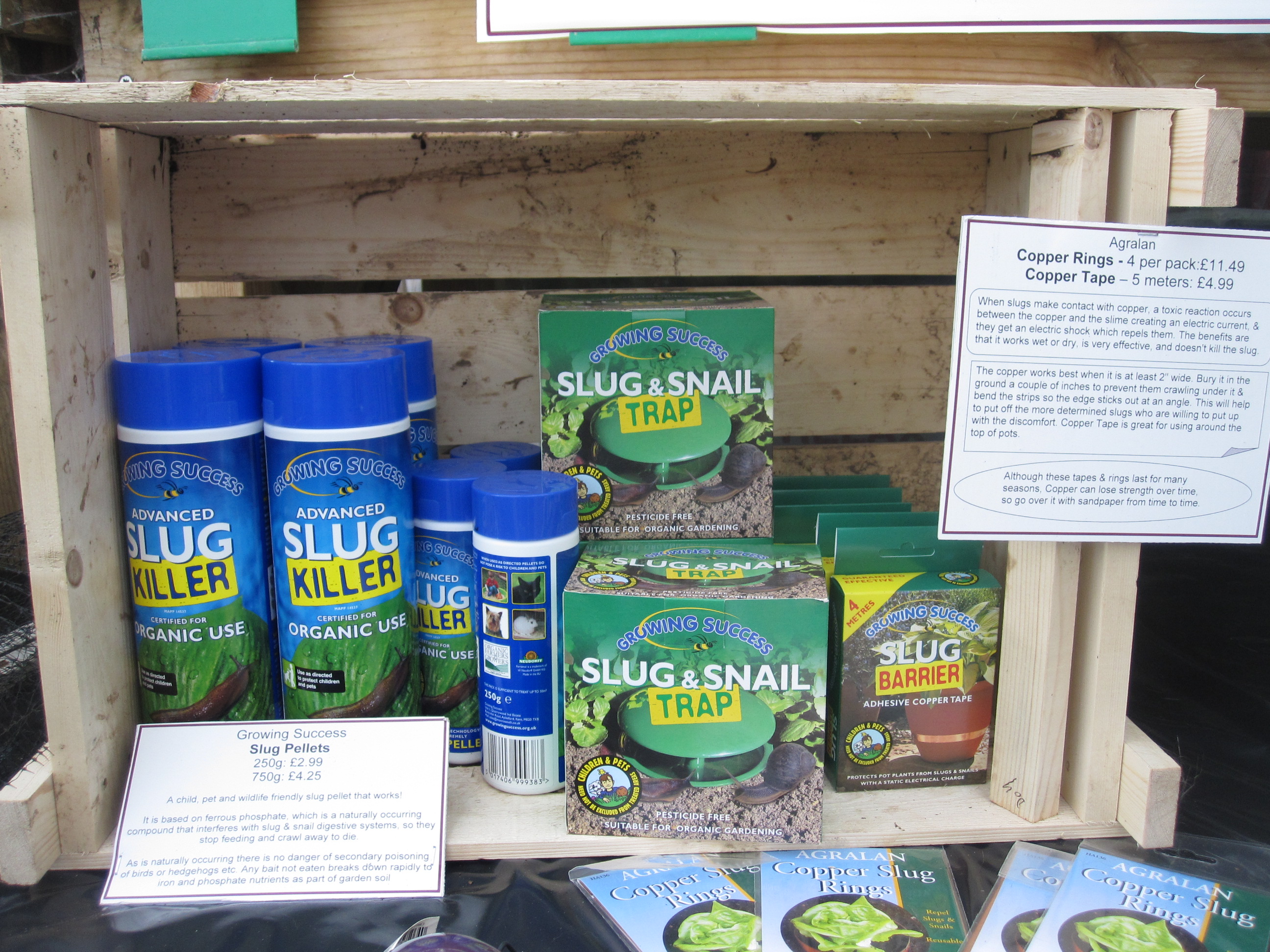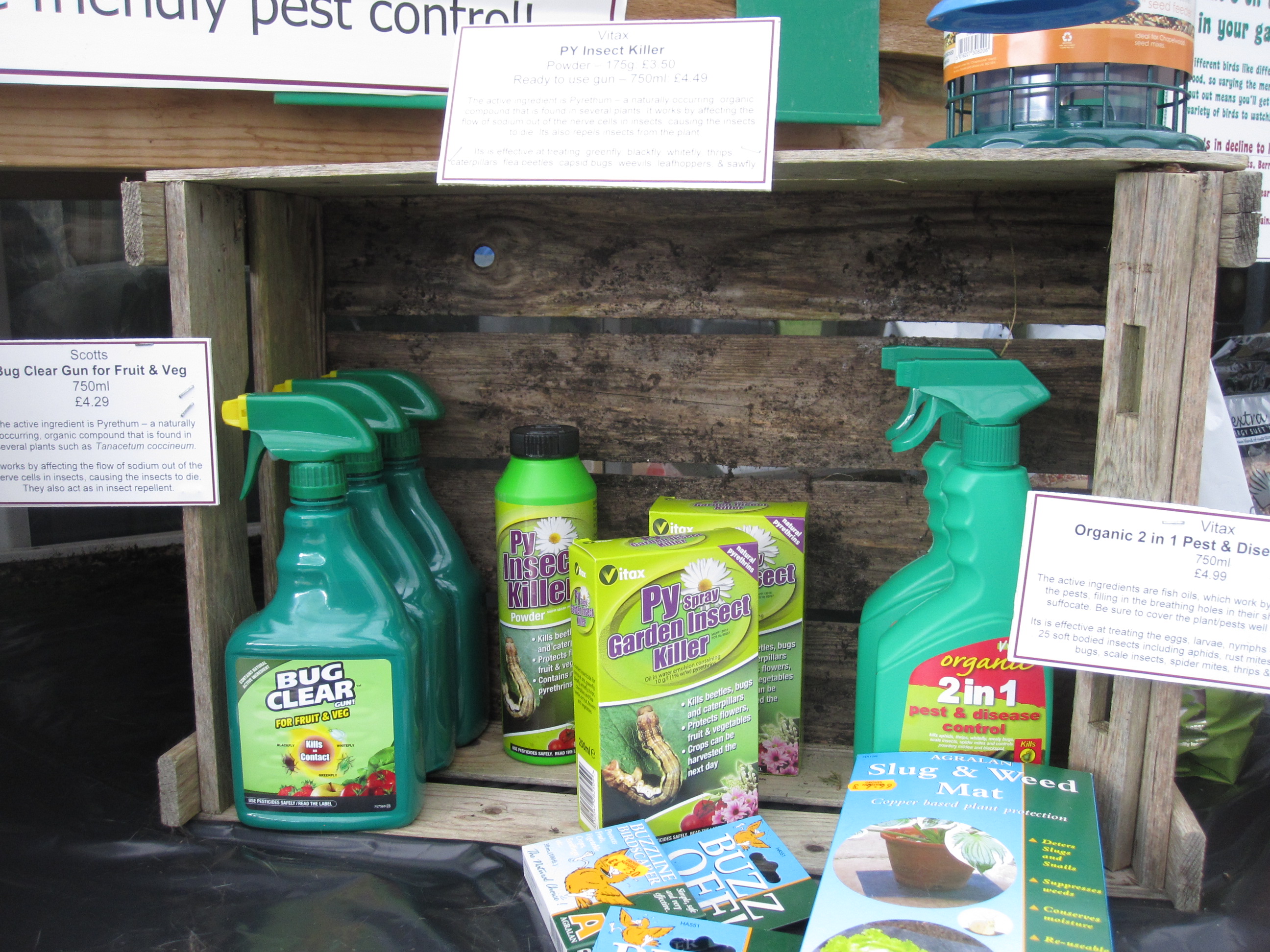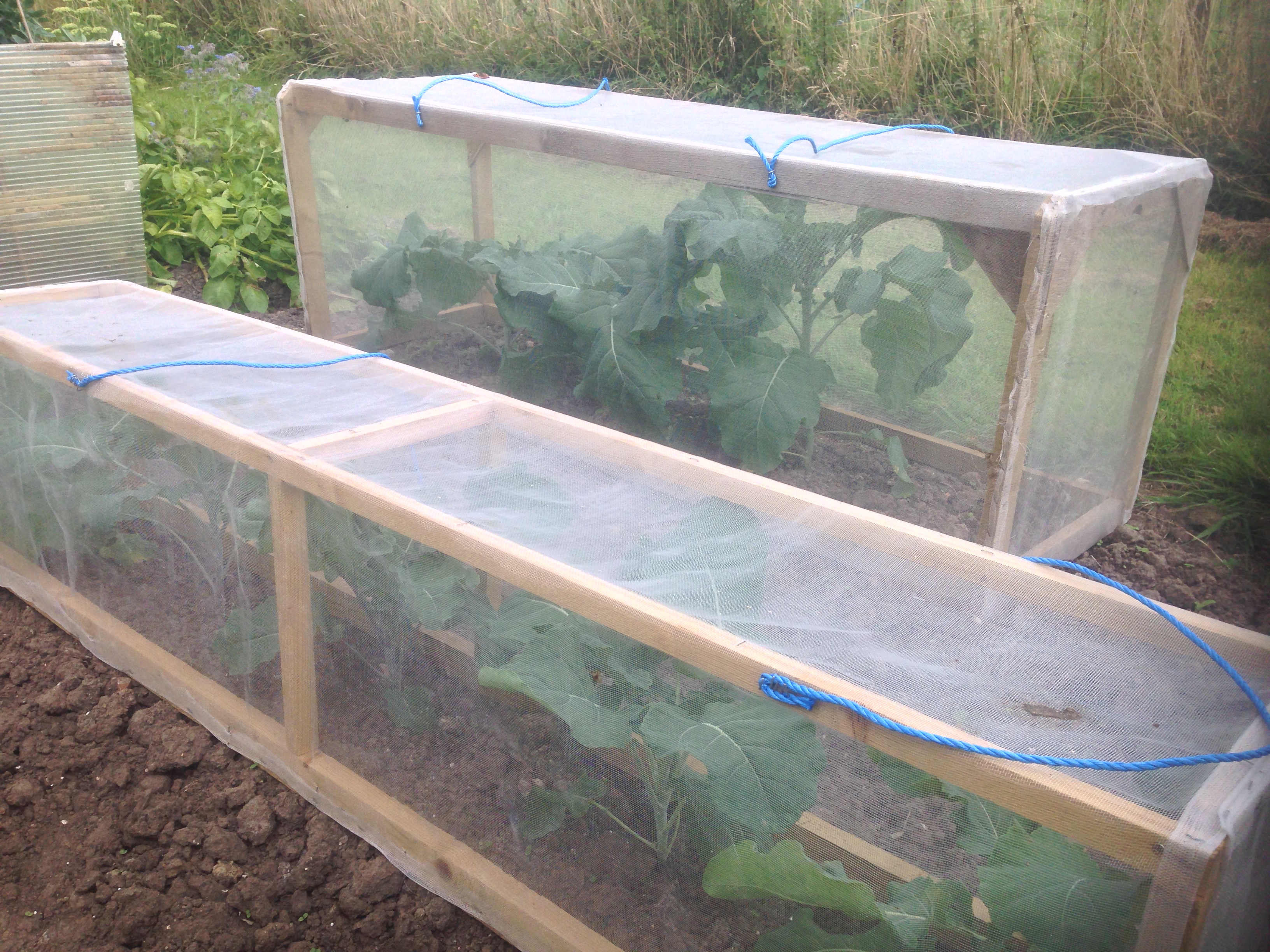- Home
- Practical Advice
- Garden Management
- Managing pests and diseases
Managing pests and diseases
We all want to see as much wildlife as possible making use of our gardens, but what if you have a little too much wildlife taking a fancy to your favourite flowers and crops? Wildlife represents only one of the elements people want from their garden, and for only a few people do the rights of blackfly outweigh a decent broad bean crop. Some biodiversity does have to be held in check. There are many old housewife methods that people like to use, and of course some pests can be picked off by hand. However if this doesn’t appeal to you or your garden is simply too big then hopefully you’ll find some of the products below useful. Certainly, you will find most Garden Centres extremely ready to sell you these - and other much less environmentally friendly products too.
Managing pests and diseases
We all want to see as much wildlife as possible making use of our gardens, but what if you have a little too much wildlife taking a fancy to your favourite flowers and crops? Wildlife represents only one of the elements people want from their garden, and for only a few people do the rights of blackfly outweigh a decent broad bean crop. Some biodiversity does have to be held in check. There are many old housewife methods that people like to use, and of course some pests can be picked off by hand. However if this doesn’t appeal to you or your garden is simply too big then hopefully you’ll find some of the products below useful. Certainly, you will find most Garden Centres extremely ready to sell you these - and other much less environmentally friendly products too.

Wildlife friendly pest control products on sale, but does the cat really count as wildlife friendly?

Wildlife friendly pest control products on sale, but does the cat really count as wildlife friendly?
The information given below is intended to help give you a balanced account of the products and their uses, as well as their limits. Also remember that like us, having a well-balanced diet and being appropriately hydrated helps to keep plants healthy, and better able to fight infections. This is especially important if you have plants in containers where they absolutely depend on you for their nutrients and water.
The information given below is intended to help give you a balanced account of the products and their uses, as well as their limits. Also remember that like us, having a well-balanced diet and being appropriately hydrated helps to keep plants healthy, and better able to fight infections. This is especially important if you have plants in containers where they absolutely depend on you for their nutrients and water.
|
Pest
|
Product
|
|
Aphid/Greenfly
|
Fatty acid spray, Pyrethrum spray
|
|
Blackfly
|
Fatty acid spray, Pyrethrum spray
|
|
Caterpillar
|
Enviromesh, Pyrethrum spray
|
|
Carrot rootfly
|
Enviromesh
|
|
Mealy bug
|
Fatty acid spray, Pyrethrum spray
|
|
Moth caterpillars on trees
|
Grease and grease bands
|
|
Slugs and snails
|
Iron triphosphate slug pellets, Copper tape/bands, beer traps, granules, wool pellets, nematodes
|
|
Spider mites
|
Fatty acid spray, Pyrethrum spray
|
|
Thrips
|
Fatty acid spray, Pyrethrum spray
|
|
Whitefly
|
Fatty acid spray, Pyrethrum spray
|
Control of slugs and snails
Iron triphosphate pellets:
Slugs and snails are every gardener’s least favoured wildlife. Fortunately, there is a safer slug pellet now available made from iron triphosphate. This causes the slug’s digestive system to become blocked so they no longer have the ability to feed, and starve as a consequence. Apart from the fact these pellets are harmless to birds and mammals, the slugs skulk away to die, away from your plants. The iron triphosphate breaks down afterwards into naturally occurring iron compounds which are not harmful to wildlife, and actually beneficial in some chalky soils. Like with all slug pellets, they have a ‘bait’ included with them to attract slugs, so only use them sparsely.

Slug control products
Copper tape & copper bands:
The tape is good for putting around the bottom of pots and containers, while the copper bands are used around the base of young plants. These are thought to work by causing the slug to have unpleasant electro-neural signals (like small electric shocks) when their slime comes into contact with the copper, repelling them from crossing the barrier. Keep the copper clean to keep it working effectively and ensure there is a complete ring around the plant.
Beer traps:
A well-known method for catching numerous slugs in one go is the beer trap. This trap (usually a plastic cup like structure with an umbrella like lid) is sunk into the ground to secure it, but the lip should be 2cm above the soil to prevent trapping beetles. You then fill it with beer to attract the slugs and couple of teaspoons of salt. When the slug drinks from the trap it comes into contact with the salt. The slug rapidly loses more fluid than it can tolerate (via osmosis), and quickly dies from dehydration. Whilst they kill multiple slugs, they only work for a radius of 1.5 m and need emptying frequently.
Granule barriers:
This is a natural slug barrier, suitable for organic gardens. The non-toxic granules are used to make a physical barrier and stop the slugs by absorbing their mucus and preventing further movement. For maximum effectiveness pour the granules, such as Vitax Slug Off around the base of plants to create a barrier, making sure there are no gaps. If the granules are disturbed by an animal or weather then the slugs will soon cross the barrier, so be sure to keep rebuilding the barrier to ensure that there are no entry points for slugs and snails to cross. Bear in mind also that slugs burrow beneath the soil so may pop up inside the barrier.
Wool pellets:
Pellets such as Vitax Slug Gone are manufactured from the fleece of sheep. Wool fibres have very fine scales with small barbs on the tip called cuticle cells. These cause wool fibres to felt and matt together. Wool fibres are very hygroscopic and this, plus the sand and grit already in the compound and the potassium salts from the sweat glands of the sheep, absorbs some of the slime from the slug’s foot to cause irritation. As soon as water is added the fibres swell to form a barrier, insulation blanket & weed suppressant. Just to warn you, they do smell of sheep!
Nematodes:
Parasitic nematodes in products such as Nemaslug control all common species of small to medium sized slugs. It contains the soil nematode Phasmarhabditis hermaphrodita which is naturally present in the UK. They prey upon slugs and snails by entering their natural body openings and once inside, they release symbiotic bacteria that stop the slug feeding within 3 days. They are not harmful for other wildlife, pets or children. One application of Nemaslug provides 300,000 nematodes for every square metre of soil, giving at least six weeks control of slugs. If timed right, it can be ideal for the time when you are trying to get seedlings established. Soil temperature needs to be at least 5 degrees centigrade and the soil needs to be moist. It does not work well in waterlogged soils. They are easy to apply as a drench, simply use a watering can with a coarse rose. Keep away from ponds as they will also kill water snails.
Control of slugs and snails
Iron triphosphate pellets.
Slugs and snails are every gardener’s least favoured wildlife. Fortunately, there is a safer slug pellet now available made from iron triphosphate. This causes the slug’s digestive system to become blocked so they no longer have the ability to feed, and starve as a consequence. Apart from the fact these pellets are harmless to birds and mammals, the slugs skulk away to die, away from your plants. The iron triphosphate breaks down afterwards into naturally occurring iron compounds which are not harmful to wildlife, and actually beneficial in some chalky soils. Like with all slug pellets, they have a ‘bait’ included with them to attract slugs, so only use them sparsely.
Copper tape & copper bands:
The tape is good for putting around the bottom of pots and containers, while the copper bands are used around the base of young plants. These are thought to work by causing the slug to have unpleasant electro-neural signals (like small electric shocks) when their slime comes into contact with the copper, repelling them from crossing the barrier. Keep the copper clean to keep it working effectively and ensure there is a complete ring around the plant.
Beer Traps:
A well-known method for catching numerous slugs in one go is the beer trap. This trap (usually a plastic cup like structure with an umbrella like lid) is sunk into the ground to secure it, but the lip should be 2cm above the soil to prevent trapping beetles. You then fill it with beer to attract the slugs and couple of teaspoons of salt. When the slug drinks from the trap it comes into contact with the salt. The slug rapidly loses more fluid than it can tolerate (via osmosis), and quickly dies from dehydration. Whilst they kill multiple slugs, they only work for a radius of 1.5 m and need emptying frequently.
Granule barriers:
This is a natural slug barrier, suitable for organic gardens. The non-toxic granules are used to make a physical barrier and stop the slugs by absorbing their mucus and preventing further movement. For maximum effectiveness pour the granules, such as Vitax Slug Off around the base of plants to create a barrier, making sure there are no gaps. If the granules are disturbed by an animal or weather then the slugs will soon cross the barrier, so be sure to keep rebuilding the barrier to ensure that there are no entry points for slugs and snails to cross. Bear in mind also that slugs burrow beneath the soil so may pop up inside the barrier.
Wool pellets:
Pellets such as Vitax Slug Gone are manufactured from the fleece of sheep. Wool fibres have very fine scales with small barbs on the tip called cuticle cells. These cause wool fibres to felt and matt together. Wool fibres are very hygroscopic and this, plus the sand and grit already in the compound and the potassium salts from the sweat glands of the sheep, absorbs some of the slime from the slug’s foot to cause irritation. As soon as water is added the fibres swell to form a barrier, insulation blanket & weed suppressant. Just to warn you, they do smell of sheep!
Nematodes:
Parasitic nematodes in products such as Nemaslug control all common species of small to medium sized slugs. It contains the soil nematode Phasmarhabditis hermaphrodita which is naturally present in the UK. They prey upon slugs and snails by entering their natural body openings and once inside, they release symbiotic bacteria that stop the slug feeding within 3 days. They are not harmful for other wildlife, pets or children. One application of Nemaslug provides 300,000 nematodes for every square metre of soil, giving at least six weeks control of slugs. If timed right, it can be ideal for the time when you are trying to get seedlings established. Soil temperature needs to be at least 5 degrees centigrade and the soil needs to be moist. It does not work well in waterlogged soils. They are easy to apply as a drench, simply use a watering can with a coarse rose. Keep away from ponds as they will also kill water snails.
Slug control products


Insect Control products
Insect Control products
Control of Aphids, Whitefly, Mealybug, Thrips and Spider mites:
Fatty acid Sprays / Insecticidal Soaps:
Insecticidal Soaps are made from plant oils (such as cotton seed, olive, palm or coconut) and animal fats (such as lard or fish oils) and the soaps are made from the salts of fatty acids in the fat and oil of the plants and animals. The exact way in which they kill invertebrates is still not totally clear, but they are thought to interfere with the insect’s outer skin (cuticle). It is also suspected that they have an additional toxic action somehow that is not yet fully understood. Insecticidal soaps should be applied when conditions favour slow drying such as early in the morning or in the evening.
Fatty acid sprays need to be applied directly to the insect in order to coat the skin. Once an insecticidal soap spray has dried, it is not effective on any insects afterwards as soaps work only on contact. Insects will not be affected by walking over or ingesting plant material that has been treated with the spray. Some plants however can get burnt by the use of these sprays. Those known to have been effected include as Japanese maples, Dicentra, pointsettias and begonias. To be sure not to cause damage to the plant, spray a small area of the plant as a test first.
Products with insecticidal soaps include: Organic Bug Free by Bayer, Pest & Disease Control by Vitax, Bug Clear for Fruit and Veg by Scotts and Doff Green Fingers Organic Pest Spray.
Control of caterpillars and Carrot Root Fly
Enviromesh:
This product (which is different from fleece) forms a physical barrier against butterflies such as “cabbage whites” and carrot root fly. It can be used to form a cage or tunnel-like structure over plants such as cabbages, purple sprouting broccoli, calabrese, cauliflower and carrots. It’s important to have the plants covered by the mesh as soon as they are planted out to prevent any eggs being laid. The mesh allows water and light through, provides a little protection against the worst of the elements and lasts for several years. Ensure it is secured to the ground all of the way around to prevent any butterflies from getting in. If the structure is built well enough it can be 100% effective against cabbage white butterflies.
Control of Moths attacking fruit trees
Tree Grease & grease bands:
These products help to protect your fruit trees from caterpillar damage from moths that have wingless, non-flying females such as winter moth, mottled umber moth and march moth. It works by the females getting stuck in the grease and therefore unable to climb the tree and cause damage. Place the bands or grease approx. 45cm (18’’) above the soil in October before the female adults emerge in November. Note that this does not work for codling moth which causes maggoty apples, as the females of these moths can fly.
Control of greenfly, blackfly, whitefly, thrips, caterpillars, flea beetles, capsid bugs, weevils, leafhoppers, and sawfly
Pyrethrum based sprays & powers:
Pyrethrum is a natural plant product that is produced by the pyrethrum daisy, Tanacetum cinerariifolium. Pyrethrum affects the central nervous systems of all types of flying and crawling insects, disrupting normal function, so that nervous impulses fail. It is effective against many garden pests, but bear in mind that it will also affect beneficial insects such as bees, as well as aquatic life if it gets into your pond. It has a low toxicity for mammals and birds and breaks down quickly, especially in sunlight, and is non-persistent in the environment. So think carefully: although it is naturally occurring and classed as organic, it will kill beneficial insects as well as garden pests at the time of application. However, compared to other chemical based pesticides, it breaks down so quickly that only the insects present at the time of application are affected, so perhaps think of it as a last resort.
Page written by Becky Groves Reviewed and compiled by Steve Head
Control of Aphids, Whitefly, Mealybug, Thrips and Spider mites:
Fatty acid Sprays / Insecticidal Soaps:
Insecticidal Soaps are made from plant oils (such as cotton seed, olive, palm or coconut) and animal fats (such as lard or fish oils) and the soaps are made from the salts of fatty acids in the fat and oil of the plants and animals. The exact way in which they kill invertebrates is still not totally clear, but they are thought to interfere with the insect’s outer skin (cuticle). It is also suspected that they have an additional toxic action somehow that is not yet fully understood. Insecticidal soaps should be applied when conditions favour slow drying such as early in the morning or in the evening.
Fatty acid sprays need to be applied directly to the insect in order to coat the skin. Once an insecticidal soap spray has dried, it is not effective on any insects afterwards as soaps work only on contact. Insects will not be affected by walking over or ingesting plant material that has been treated with the spray. Some plants however can get burnt by the use of these sprays. Those known to have been effected include as Japanese maples, Dicentra, poinsettias and begonias. To be sure not to cause damage to the plant, spray a small area of the plant as a test first.
Products with insecticidal soaps include: Organic Bug Free by Bayer, Pest & Disease Control by Vitax, Bug Clear for Fruit and Veg by Scotts and Doff Green Fingers Organic Pest Spray.

Protective cages made using Enviromesh
Protective cages made using Enviromesh
Control of caterpillars and Carrot Root Fly
Enviromesh:
This product (which is different from fleece) forms a physical barrier against butterflies such as “cabbage whites” and carrot root fly. It can be used to form a cage or tunnel-like structure over plants such as cabbages, purple sprouting broccoli, calabrese, cauliflower and carrots. It’s important to have the plants covered by the mesh as soon as they are planted out to prevent any eggs being laid. The mesh allows water and light through, provides a little protection against the worst of the elements and lasts for several years. Ensure it is secured to the ground all of the way around to prevent any butterflies from getting in. If the structure is built well enough it can be 100% effective against cabbage white butterflies.
Control of Moths attacking fruit trees
Tree Grease & grease bands:
These products help to protect your fruit trees from caterpillar damage from moths that have wingless, non-flying females such as winter moth, mottled umber moth and march moth. It works by the females getting stuck in the grease and therefore unable to climb the tree and cause damage. Place the bands or grease approx. 45cm (18’’) above the soil in October before the female adults emerge in November. Note that this does not work for codling moth which causes maggoty apples, as the females of these moths can fly.
Control of greenfly, blackfly, whitefly, thrips, caterpillars, flea beetles, capsid bugs, weevils, leafhoppers, and sawfly
Pyrethrum based sprays & powers:
Pyrethrum is a natural plant product that is produced by the pyrethrum daisy, Tanacetum cinerariifolium. Pyrethrum affects the central nervous systems of all types of flying and crawling insects, disrupting normal function, so that nervous impulses fail. It is effective against many garden pests, but bear in mind that it will also affect beneficial insects such as bees, as well as aquatic life if it gets into your pond. It has a low toxicity for mammals and birds and breaks down quickly, especially in sunlight, and is non-persistent in the environment. So think carefully: although it is naturally occurring and classed as organic, it will kill beneficial insects as well as garden pests at the time of application. However, compared to other chemical based pesticides, it breaks down so quickly that only the insects present at the time of application are affected, so perhaps think of it as a last resort.
Page written by Becky Groves Reviewed and compiled by Steve Head












